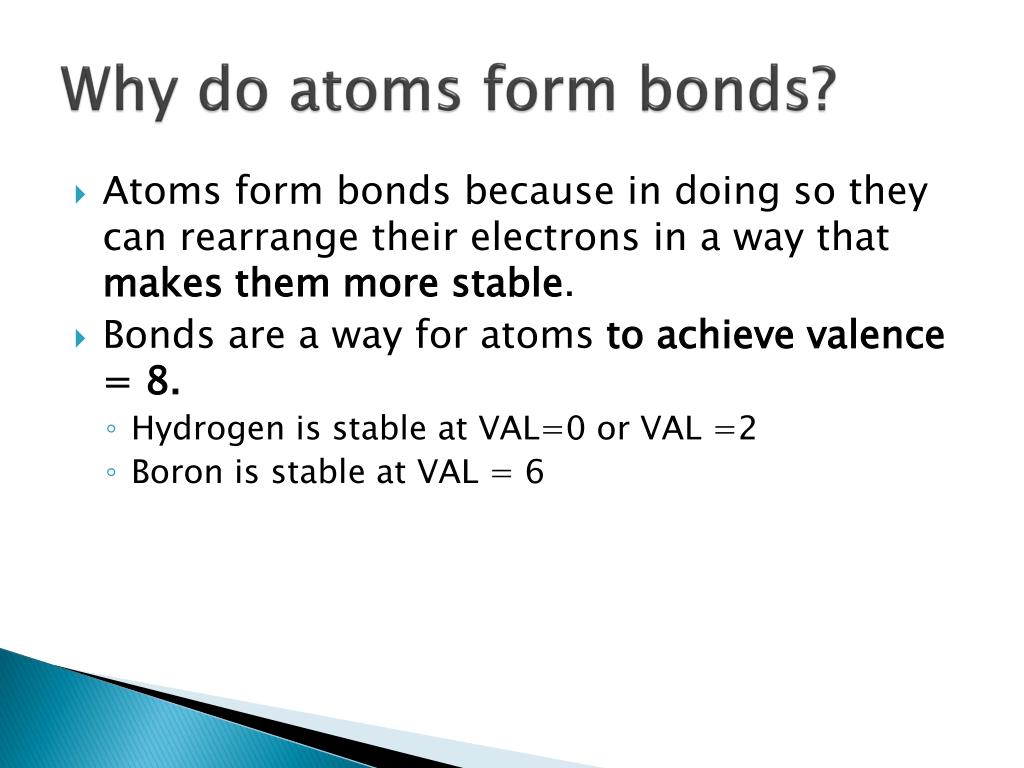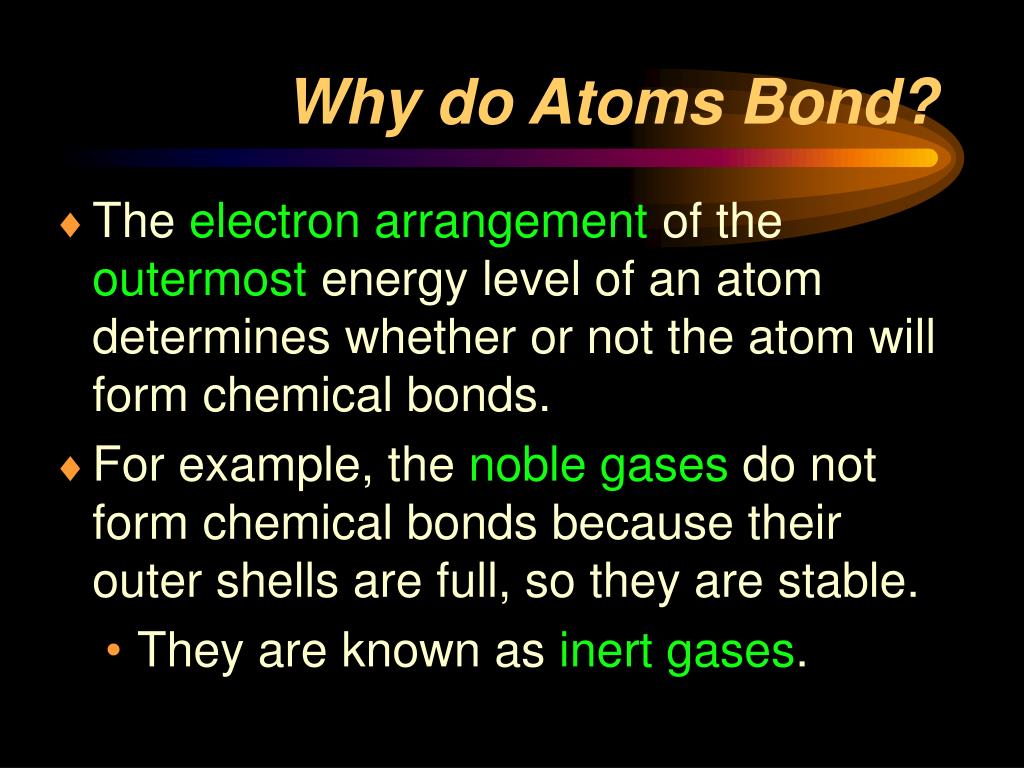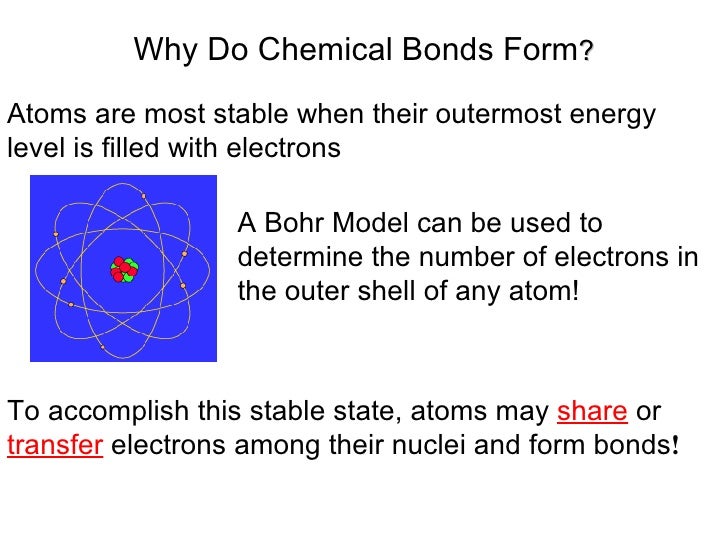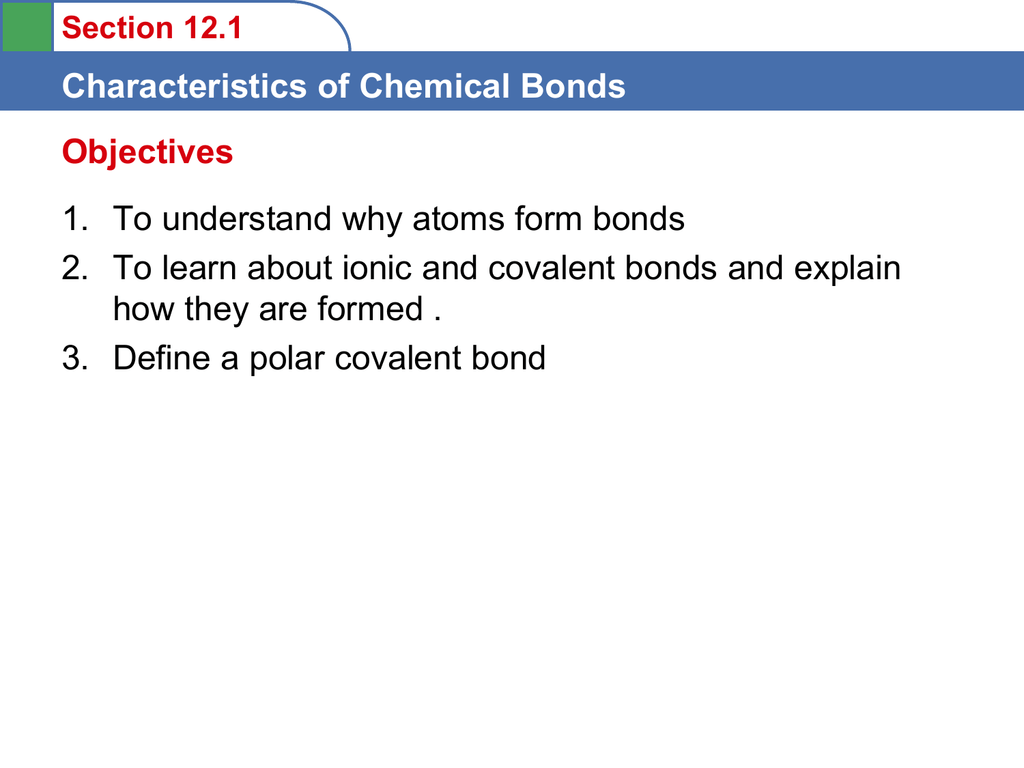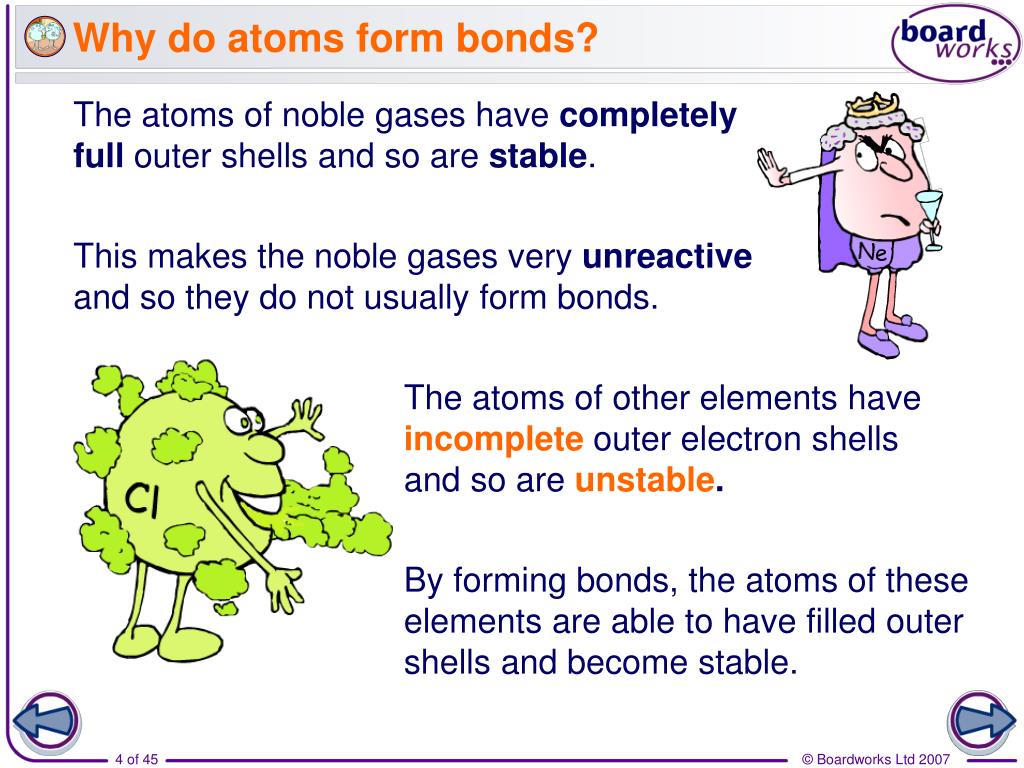Why Do Atoms Form Chemical Bonds
Why Do Atoms Form Chemical Bonds - Web why form chemical bonds? But why do atoms bond to each other in this way? The attraction between different atoms that enables the formation of molecules or compounds. Some of the attractive forces are weak, some are very strong. 149) why does the octet rule not always refer to a stable arrangement of eight valence electrons? The type of chemical bond maximizes the stability of the atoms that form it. Web posted by city chemical on monday, 01 april 2019. Web chemical bonding, any of the interactions that account for the association of atoms into molecules, ions, crystals, and other species. The bond may result from the electrostatic force between oppositely charged ions as in ionic bonds, or through the sharing of electrons as in covalent bonds. (often used as a synonym for chemical) a compound.
Web sep 4, 2021 3.2: Atoms form chemical bonds because they want a lower energy and more stable electron configuration. Simply put, atoms form bonds in order to become more stable. (often used as a synonym for chemical) a compound. Web why do atoms form chemical bonds? But why do atoms bond to each other in this way? At the start of this article, we introduced you to a chemical bond: When atoms approach one another, their electrons interact and tend to distribute themselves in space so that the total energy is lower than it would be in any alternative arrangement. Web atoms form chemical bonds to make their outer electron shells more stable. Some of the attractive forces are weak, some are very strong.
The attraction between different atoms that enables the formation of molecules or compounds. (often used as a synonym for chemical) a compound. Web atoms form chemical bonds to make their outer electron shells more stable. Web sep 4, 2021 3.2: The type of chemical bond maximizes the stability of the atoms that form it. The bond may result from the electrostatic force between oppositely charged ions as in ionic bonds, or through the sharing of electrons as in covalent bonds. Web why do atoms bond? Atoms form chemical bonds to achieve a full outer energy level, which is the most stable arrangement of electrons. Some of the attractive forces are weak, some are very strong. Simply put, atoms form bonds in order to become more stable.
PPT Chemical Bonding What and Why PowerPoint Presentation, free
The bond may result from the electrostatic force between oppositely charged ions as in ionic bonds, or through the sharing of electrons as in covalent bonds. According to the types of bonds contained in a molecule, the physical properties including melting point, hardness, electrical and thermal conductivity and solubility are determined. The type of chemical bond maximizes the stability of.
Why Do Atoms Form Chemical Bond in Urdu Hindi Lecture /Chemistry for
There are three different types of chemical bonds:. Web why form chemical bonds? Simply put, atoms form bonds in order to become more stable. But why do atoms bond to each other in this way? Web bonds form when atoms share or transfer valence electrons.
PPT Ions PowerPoint Presentation, free download ID6738771
The attraction between different atoms that enables the formation of molecules or compounds. Attractive forces between atoms that are strong enough to make the linked elements function as a single unit. Web a chemical bond is a lasting attraction between atoms or ions that enables the formation of molecules, crystals, and other structures. Some of the attractive forces are weak,.
PPT Chapter 7 Atoms & Bonding PowerPoint Presentation, free download
149) why does the octet rule not always refer to a stable arrangement of eight valence electrons? Web why do atoms form chemical bonds? There are three different types of chemical bonds:. The type of chemical bond maximizes the stability of the atoms that form it. Web bonds form when atoms share or transfer valence electrons.
Biochemistry Honors
Web a chemical bond is a lasting attraction between atoms or ions that enables the formation of molecules, crystals, and other structures. Atoms form chemical bonds to achieve a full outer energy level, which is the most stable arrangement of electrons. Attractive forces between atoms that are strong enough to make the linked elements function as a single unit. Web.
PPT Atomic structure and chemical bonding PowerPoint Presentation
Web chemical bonding, any of the interactions that account for the association of atoms into molecules, ions, crystals, and other species. But why do atoms bond to each other in this way? All bonds appear to link atoms through a sharing of — or an attempt to share — electrons. There are three different types of chemical bonds:. At the.
Characteristics of Chemical Bonds 1. To understand why atoms form bonds
Web chemical bonding, any of the interactions that account for the association of atoms into molecules, ions, crystals, and other species. Web bonds form when atoms share or transfer valence electrons. The attraction between different atoms that enables the formation of molecules or compounds. When atoms approach one another, their electrons interact and tend to distribute themselves in space so.
PPT Why do atoms form bonds? PowerPoint Presentation, free download
Web chemical bonding, any of the interactions that account for the association of atoms into molecules, ions, crystals, and other species. Web atoms form chemical bonds to make their outer electron shells more stable. (often used as a synonym for chemical) a compound. Atoms form chemical bonds because they want a lower energy and more stable electron configuration. Web why.
PPT What are bonds? PowerPoint Presentation, free download ID5980343
Atoms form chemical bonds because they want a lower energy and more stable electron configuration. Web why do atoms form chemical bonds? Attraction between atoms or ions leads to a chemical bond. Many atoms become stable when their valence shell is filled with electrons or when they satisfy the. The attraction between different atoms that enables the formation of molecules.
CHEMISTRY 9TH CH 4, LECTURE 1, Why do Atoms Form Chemical Bonds
According to the types of bonds contained in a molecule, the physical properties including melting point, hardness, electrical and thermal conductivity and solubility are determined. Web atoms form chemical bonds to make their outer electron shells more stable. Attraction between atoms or ions leads to a chemical bond. Attractive forces between atoms that are strong enough to make the linked.
The Attraction Between Different Atoms That Enables The Formation Of Molecules Or Compounds.
There are three different types of chemical bonds:. When atoms approach one another, their electrons interact and tend to distribute themselves in space so that the total energy is lower than it would be in any alternative arrangement. (often used as a synonym for chemical) a compound. All bonds appear to link atoms through a sharing of — or an attempt to share — electrons.
149) Why Does The Octet Rule Not Always Refer To A Stable Arrangement Of Eight Valence Electrons?
Web sep 4, 2021 3.2: But why do atoms bond to each other in this way? Web bonds form when atoms share or transfer valence electrons. At the start of this article, we introduced you to a chemical bond:
Web Chemical Bonding, Any Of The Interactions That Account For The Association Of Atoms Into Molecules, Ions, Crystals, And Other Species.
Atoms form chemical bonds because they want a lower energy and more stable electron configuration. Many atoms become stable when their valence shell is filled with electrons or when they satisfy the. Atoms form chemical bonds to achieve a full outer energy level, which is the most stable arrangement of electrons. Some of the attractive forces are weak, some are very strong.
Web Why Do Atoms Form Chemical Bonds?
Attractive forces between atoms that are strong enough to make the linked elements function as a single unit. Simply put, atoms form bonds in order to become more stable. Web why do atoms bond? Attraction between atoms or ions leads to a chemical bond.
